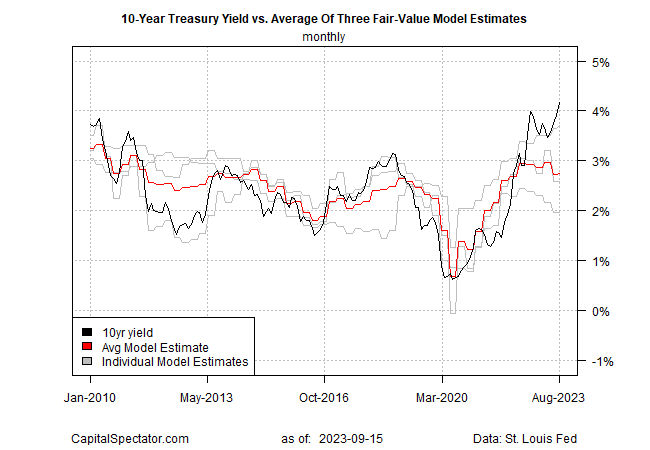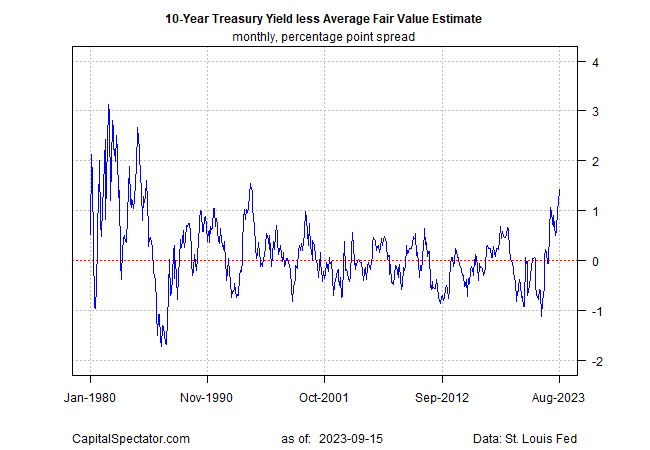The US 10-year Treasury yield continued to trend higher in August, rising further above CapitalSpectator.com’s “fair-value” estimate, which is based on averaging three models.
It’s unclear if the mean estimate is wrong or if the market’s experiencing an extended run of irrational exuberance. Perhaps it’s a bit of both. In any case, the widening spread in the market yield over the model’s estimate is striking from a historical perspective.
The 10-year rate in August marked a full month of 4.0%-plus yields—the highest sustained run at or above that mark since 2008 (black line in the chart below). By contrast, the average fair-value estimate via three models remains below 3% (red line).
The spread in the market rate over the average estimate for the three models rose to 1.42 percentage points last month. That’s up modestly from July and also marks the highest spread since 1994, as shown in the next chart below.

Spreads at the current level, or higher, aren’t unprecedented, although we haven’t seen this level of divergence for several decades. What’s more, relatively wide spreads can persist for several years. But as the spread chart reminds us, eventually the market rate moves closer into alignment with the average fair value estimate, quite often overshooting to the opposite extreme. Timing, however, is uncertain.
Notably, the spread varies around the mean estimate randomly, which implies that extreme variations will “correct” eventually and that the average estimate provides useful if not timely information. That suggests a couple of takeaways from the current market/fair value mismatch.
First, the current market yield appears to offer a relatively attractive opportunity for buy-and-hold investors. Second, the unusually high premium in the current market yield vs. the average estimate suggests that further increases in the 10-year rate face headwinds.
The caveat, of course, is that the market can remain irrational for longer than you can remain liquid. To be fair, another interpretation is that the modeling is simply wrong, and the crowd is correctly pricing in higher yields because economic and/or inflation conditions warrant that pricing.
Pick your poison. I still favor the view that the 10-year rate is at/near a peak. But Capital Spectator has been saying that for several months and the market continues to ignore the advice. Hope (and confidence in the model) spring eternal.
